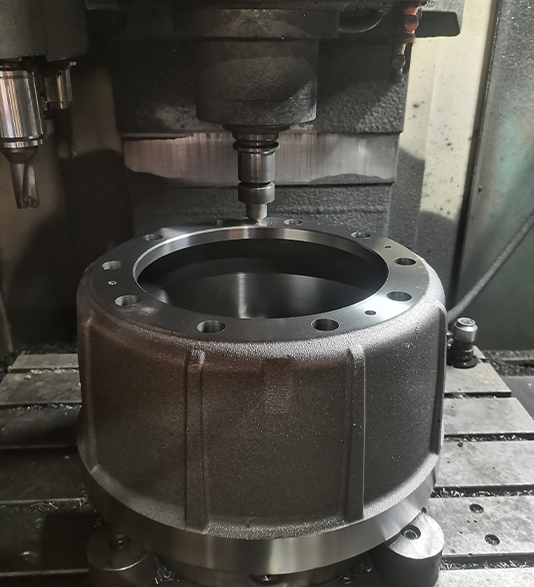Sep . 25, 2024 16:49 Back to list
brake drum repair
Brake Drum Repair An Essential Guide for Vehicle Safety
Brake systems are a crucial component of vehicle safety, and understanding how to properly maintain and repair them is vital for every car owner. Among the various parts that comprise a braking system, brake drums play a significant role, especially in vehicles with drum brake systems. This article will delve into the importance of brake drum repair, the common issues associated with brake drums, and a step-by-step guide on how to properly maintain and repair them.
What are Brake Drums?
Brake drums are cylindrical components that house the brake shoes in drums brake systems, which are commonly found in older vehicles and some newer models, particularly on the rear brakes. When the brake pedal is pressed, hydraulic fluid forces the brake shoes against the inside surface of the drum, creating friction that slows down the vehicle. Over time, brake drums can wear out or become damaged, leading to decreased braking efficiency and increased safety risks.
Importance of Brake Drum Repair
Regular maintenance and timely repair of brake drums are crucial for several reasons
1. Safety The primary purpose of the brakes is to bring the vehicle to a stop. Worn or damaged brake drums can significantly impair braking performance, posing a severe risk to the driver, passengers, and other road users.
2. Cost-Effectiveness Addressing minor issues with brake drums early can prevent them from escalating into major problems that require costly replacements. Regular inspections and repairs can extend the life of your braking system.
3. Performance Well-maintained brake drums contribute to smoother and more responsive braking, enhancing overall vehicle performance and providing a better driving experience.
Common Issues with Brake Drums
Several problems may arise with brake drums that necessitate repair
1. Warping When subjected to excessive heat, brake drums can warp, causing uneven contact with the brake shoes. This results in vibrations when braking, which can lead to further damage if not addressed.
2. Scoring Over time, the surface of the brake drum can become scored or grooved due to friction against the brake shoes. This condition reduces the efficiency of the braking system.
3. Cracks Severe heat, heavy braking, or manufacturing defects can lead to cracks in the brake drum. Cracked drums can fail during operation, leading to brake failure.
4. Excessive Wear Like all components, brake drums experience wear over time. Regular inspections can help identify worn drums that need resurfacing or replacement.
brake drum repair

Step-by-Step Guide to Brake Drum Repair
Repairing brake drums may seem daunting, but with the right tools and knowledge, it can be accomplished effectively. Here’s a basic step-by-step guide
Tools Needed - Jack and jack stands - Lug wrench - Brake drum puller (if necessary) - Torque wrench - Replacement brake shoes (if needed) - Drum resurfacing tool (if applicable) - Brake cleaner - Safety goggles and gloves
Steps
1. Preparation Park the vehicle on a flat surface, engage the parking brake, and wear safety goggles and gloves.
2. Remove the Wheel Use the lug wrench to loosen the lug nuts of the wheel covering the brake drum. Lift the vehicle with a jack and secure it on jack stands before completely removing the wheel.
3. Inspect the Brake Drum Check for any visible damage, scoring, or cracks. If the drum appears damaged, it may need to be resurfaced or replaced.
4. Remove the Brake Drum If the drum does not pull off easily, you might need to use a brake drum puller to remove it safely.
5. Clean the Drum and Surroundings Use brake cleaner to remove dust, grease, and debris from the drum and the brake assembly.
6. Replace Brake Shoes (if necessary) If the brake shoes are worn out, replace them by removing the retaining springs and fitting the new shoes in place.
7. Resurface or Replace the Drum If the drum is scored but not severely damaged, you can resurface it using a drum resurfacing tool. Otherwise, replace it with a new one.
8. Reassemble Reinstall the drum and wheel, tighten the lug nuts to the manufacturer's specifications, lower the vehicle, and recheck the tightness.
9. Test Drive Finally, take the vehicle for a short test drive to ensure everything is functioning well. Check for any unusual noises or vibrations.
Conclusion
Brake drum repair is an essential maintenance task for ensuring the safety and performance of your vehicle. Understanding how to identify issues and perform repairs can save money and enhance your driving experience. If you're ever in doubt, don't hesitate to consult with a professional mechanic to ensure your vehicle's braking system is in top shape. Safe driving starts with well-maintained brakes!
-
HINO Industrial Efficiency Solutions - ¡Ң���ຽ��е��������˾
NewsJul.13,2025
-
HINO Industrial Solutions - ¡Ң���ຽ��е��������˾ | Advanced Technology&Reliability
NewsJul.13,2025
-
HINO Industrial Efficiency-Jiangsu Hino Industrial|Productivity Optimization&Cost Reduction
NewsJul.12,2025
-
HINO-¡Ң���ຽ��е��������˾|Advanced Industrial Solutions&Energy Efficiency
NewsJul.12,2025
-
Premium Brake Drum Iveco – Durable Drum Brake Drum & Brake Shoe Solutions
NewsJul.08,2025
-
High-Performance Brake Drum Liza for Enhanced Safety Reliable Drum Brake Drum & Brake Shoe Solutions
NewsJul.08,2025
